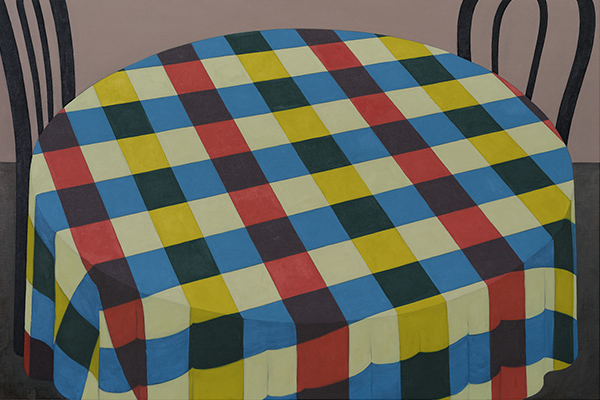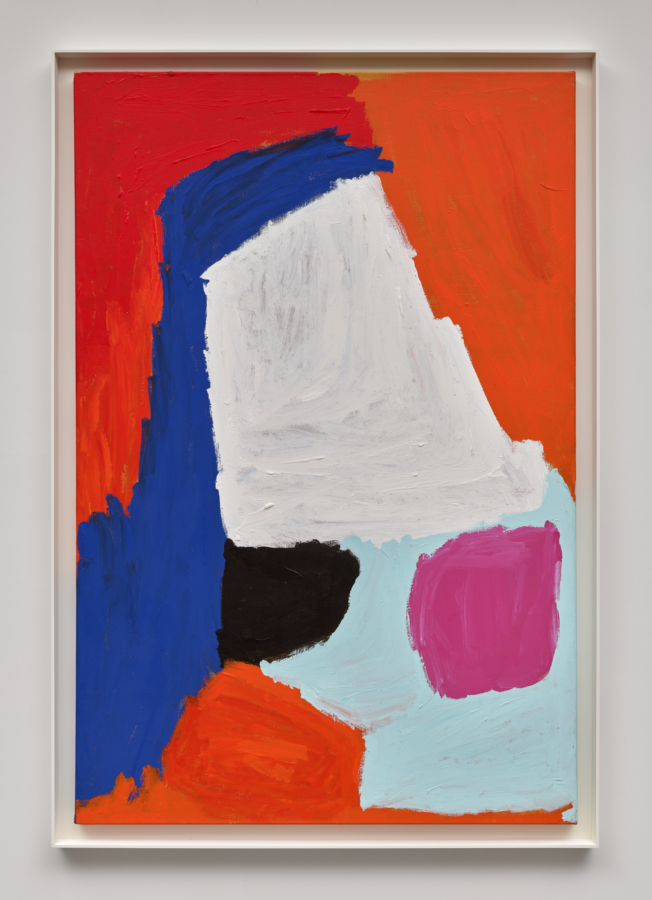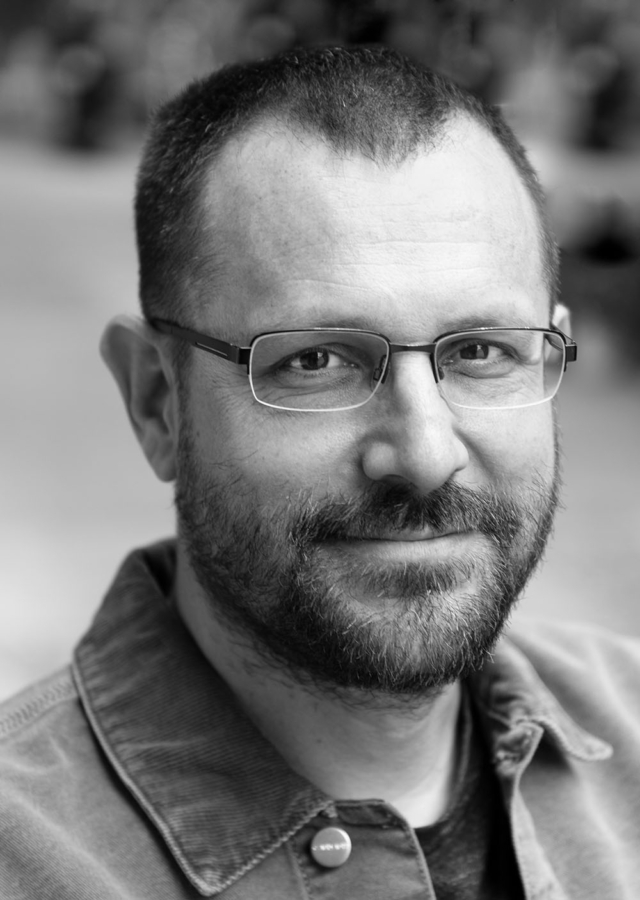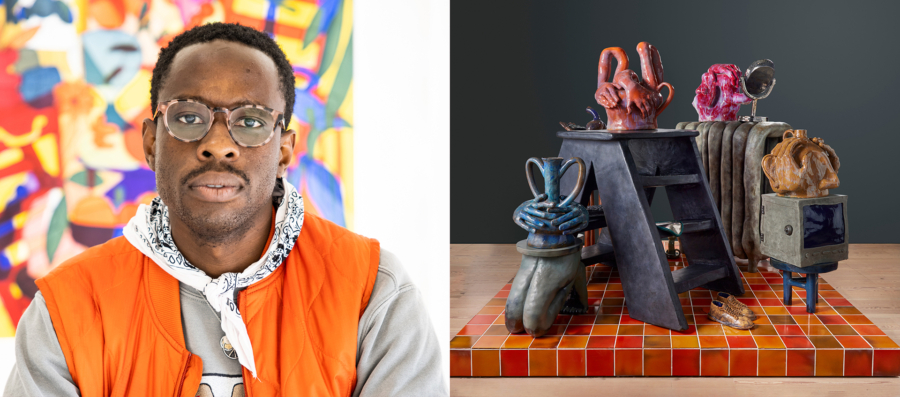Artforum, May 2004.
I have always viewed the magazine fashion story as an important and innovative contemporary genre. If movies are akin to novels, then the fashion story is like a piece of short fiction. It is a modest improvised scenario, created by a quickly gathered team of talents: the photographer, the stylist, the models, the location scout, the makeup and hair stylists, and the art director from the magazine—with fashion acting as a catalyst for the whole production.
As creative director and publisher of Index magazine for the past seven years, I have had the unique opportunity to work with and learn from extraordinary photographers. So when I first heard rumblings a few months ago about MoMA’s fashion-photography show, I was elated that the institution that first recognized photography as a distinct medium had chosen to make an exhibition about the work of the photographers and independent magazines that revolutionized the culture of fashion in the ’90s. But now that the party has started, it turns out that few of the people I had hoped to see are there. While all of the photographers in “Fashioning Fiction” are serious practitioners worthy of esteem, I am mystified by nearly all of the curatorial choices in this exhibition.
According to the catalogue, the exhibition is organized around the idea that “two of the dominant narrative modes” in fashion photography of the ’90s are “the influence of cinema and the snapshot” and that these modes “are also central to contemporary art photography.” This proposition appears sound, at least to an amateur observer such as myself. Yet it seems that curators Susan Kismaric and Eva Respini have used this simple premise to justify their highly subjective selections.
The curators omitted photographers such as Corinne Day, Nick Knight, Terry Richardson, Richard Kern, and Mark Borthwick, all of whom contributed to the leading independent magazines of the ’90s during their most innovative years. They also excluded fashion stories from i-D, The Face, Purple, and Dutch, the pioneering fashion magazines of the decade. And none of the stories includes Kate Moss, the fashion model whose influence on the rise of the ’90s aesthetic equaled that of any photographer.
Although the fashion culture of the ’90s was inspired by street fashion, grunge, squatting, and the Internet boom—what Kismaric and Respini call the “concerns, desires, and realities of youth culture”—the curators have certainly managed to exclude these themes from their chosen fashion stories. Apart from one story by Mario Sorrenti, you won’t find any hoodies, Nike high tops, androgynous hipsters, or heroin chic. In fact, the curators manage to include no less than five stories set in prototypical upper-class milieus: Tina Barney’s photos depict powerful figures from the New York cultural establishment in their homes; Larry Sultan’s Kate Spade campaign shows a moneyed family staying at the Carlyle on a visit to New York; Steven Meisel’s story “The Good Life” for Vogue Italia depicts the family rituals of well-to-do suburban Americans; Ellen von Unwerth’s ads for Alberta Ferretti show glamorous vamps in black cocktail dresses prowling the Upper East Side. And Juergen Teller’s many shoots with the likes of Kate Moss and Sofia Coppola are excluded in favor of his portraits of wealthy haute couture clients for W.
Though they never mention it, the curators also seem to be taking a strong stand on the fashion they like. Prada, Ferretti, Comme des Garçons, as well as Kate Spade accessories, make their list. Versace, Gucci, McQueen, and Adidas do not. Even these fashion choices seem subsumed to representative art-world taste. More broadly, the major criterion behind all the choices in the exhibition seems to be a desire for proximity to power and influence, with special emphasis on power in the art world: “Art photographers” are emphasized over those whose practice is centered on fashion. Ad campaigns are represented disproportionately to magazine fashion editorials. MoMA’s own power is reflected in the inclusion of Cindy Sherman, whose work seems to me to have had little import to fashion photography in the ’90s. But the museum purchased her “Untitled Film Stills” to much fanfare a few years ago.
Delving into the catalogue, my mystification only intensified. Kismaric and Respini start out diligently enough, attempting to chronicle the revolution in fashion culture of the ’90s. They acknowledge the rise and influence of a host of small independent magazines, including i-D, The Face, and Dazed and Confused in the UK, as well as Purple, Dutch, and Self Service on the Continent. They emphasize that the editors of these magazines saw “fashion as a conveyor of cultural ideas” and “fostered an intersection for art, music, fashion, design, and youth culture.” Yet Kismaric and Respini award little importance to the editorial personnel of these remarkable publications, who were crucial to the fashion-culture revolution that is their subject. They mention by name only Terry Jones and Nick Knight, founder and editor, respectively, of i-D, and Phil Bicker, art director at The Face. As for the staffs of all the other magazines, we are told only that they “bridged the worlds of art and fashion, in part, because, some of their designers and even editors were art-school graduates.”
But when Kismaric and Respini attempt cultural analysis, things get really strange. To explain the genesis of ’90s fashion photography, they try a classic gambit, arguing that fashion photography of the ’90s erupted when “the genre moved away from the paradigm of an idealized and classic beauty toward a new vernacular allied with lifestyle, pop and youth culture, and the demimonde.” However, after recounting the history of the vulgar and vernacular in the fashion photography of the ’50s and ’60s, they themselves disprove the idea that the ’90s represented a break with any recent epoch of classic beauty. Then they try out another old saw, philosophizing that “the avant-garde had its usual effect” so that, “by 1990, sporadic but adventurous, racy, and highly individualistic bodies of work made for fifty years had coalesced into a trend that infiltrated the main body of the fashion photography world.” So, in the end, it’s those secret agents of the avant-garde who were responsible—even if it’s hard to see how the trend infiltrated headquarters if it didn’t make it onto the editorial pages of Vogue, Harper’s Bazaar, or the other big-circulation magazines.
Although the curators emphasize the importance of ’60s fashion photography to Although the curators emphasize the importance of ’60s fashion photography to developments in the ’90s, their narrative curiously omits many of the best fashion photographers of the earlier era. They talk about Avedon, praise the French photographer Guy Bourdin, and gratuitously diminish the importance of the late Helmut Newton (whom many younger photographers view as an influential role model) for introducing “the demimonde in all the right places: doctors’ and dentists’ offices, and on coffee tables.” Yet Bob Richardson, James Moore, Jerry Schatzberg, and the other Americans who then worked for Vogue and Bazaar go unmentioned, even though they anticipated the strategies of the ’90s by photographing in evocative locations borrowed from everyday life and appropriating camera angles and lighting from experimental film directors like Antonioni and Godard.
I would argue that Kismaric and Respini were obligated to omit this work because its presence would have undermined the central premise of “Fashioning Fiction”: that fashion photography in the ’90s was interesting if and only if it reflected the influence of art on fashion’s sensibility. If the photography of Bob Richardson or James Moore enters the mix, one is obliged to consider its relationship to the work of Ellen von Unwerth and the other photographers using cinematic syntax instead of the influence of art-world models such as Sherman. But any acknowledgment of intertextual reference within fashion photography would validate its cultural legitimacy, threatening the premise that fashion photography must borrow from art in order to create valid meaning.
Ultimately the curators justify their approach by claiming that the “fashion world has turned to current trends in art photography,” despite their talk of the multiple cultural intersections running through ’90s fashion photography. Almost every detail of the exhibition colludes to support this view, especially their inclusion of six “art photographers” as half of the show. Perhaps this should be expected at the Museum of Modern Art, which is, after all, an institution devoted to the legitimacy and importance of art as a cultural practice. Yet since its founding in the ’30s, MoMA has promoted broadening the self-conscious criticality of modern art to include practices previously considered degraded by their commercial economies, such as photography and design. The Modern was the first institution to propose that photography need not reference painting for legitimacy and that design could be viewed in terms of its own formal and functional conditions. Unfortunately Kismaric and Respini break with that willingness to award newly legitimized artistic practices their own internal aesthetic histories.
To support their position, Kismaric and Respini invoke the recently minted figure of the art photographer, whom they are reticent to define because of the “fluidity” of such categorizations. It seems pretty clear, however, that their “art photographer” is a figure invented in the ’80s who also flourished in the ’90s: the photographer who makes limited-edition prints and exhibits them in art galleries that also exhibit other types of contemporary art. Surely the art photographer has brought something valuable to the table of culture. But he or she has also broken with an older model of the photographer as a maverick who resists submitting to a circumscribed, elite cultural field and instead shuttles between arenas, partaking in just the intercultural exchanges that “Fashioning Fiction” claims to support. Interestingly, the two art photographers who have best maintained this maverick point of view, Wolfgang Tillmans and Richard Prince, are excluded from the discussion in the catalogue, despite their obvious influence on the work in the show.
The exhibition checklist and catalogue text make a schizophrenic pair. But there is still more to puzzle over in the Alice in Wonderland world of “Fashioning Fiction.” Following the curator’s essay, one finds a very strange addendum at the end of the exhibition catalogue, an interview not with a photographer but with Dennis Freedman, creative director of W and vice-chairman of Fairchild Publications. The interview’s preface introduces Freedman almost as an anthropological subject, who will reveal “just what the stylists, art directors, models, editors, photographers, creative directors, and their associates actually do to make the cutting-edge editorials we see in magazines.”
I was personally delighted by this interview. In my estimation, Freedman is a lone figure in the world of mainstream American magazines, supporting innovative photographers and the creative integrity of fashion photography. In the interview, he affirms the essentially collaborative nature of the fashion story and recounts the struggle for autonomous expression that editors and photographers endure in the face of practical exigencies. He also goes to some effort to laud the underrecognized achievement of Ruth Ansel, who, along with co–art director Bea Feitler, presided over Harper’s Bazaar in the mid-’60s, shaping issues in which photographers and artists came together to create the kinds of intersections that were the model for the ’90s.
Yet upon closer examination, Freedman’s role in “Fashioning Fiction” reflects the zany decisions that characterize the exhibition as a whole. In the interview’s preface, we read that “over a period of weeks, Freedman and the exhibition’s curators engaged in a dialogue . . . in which he shared his thoughts on innovations in recent fashion photography.” Then, turning back to the acknowledgments at the beginning of the catalogue, we notice that the curators thank him for having “helped direct our research and generously provided hospitality within the world of fashion.” A purist might claim that Freedman should not both have a curatorial voice and contribute work to the exhibition. A cynic might claim that his direction and hospitality were rewarded with the inclusion of no less than three editorial fashion stories from W magazine—out of a total of twelve projects in the exhibition.
I myself hold neither view. It seems to me that the curators did well in choosing to collaborate with Freedman, a leading voice in the world of fashion photography. But what concerns me is the obfuscation of his role, due to the curators’ pervasive lack of insight into issues of authorship. Visitors to “Fashioning Fiction” would probably not imagine Freedman to be a participant in the exhibition, since the three stories from W are credited not to their creative director but to the photographers Tina Barney, Philip-Lorca diCorcia, and Juergen Teller. And yet, in his interview, Freedman himself calls these stories collaborations. He explains how he personally chose the themes and the photographers and participated in the shoots. In recent years, collaborative efforts involving teams of participants with multiple roles have become commonplace throughout every cultural arena. Had Freedman’s several key roles in “Fashioning Fiction” been openly acknowledged, the exhibition and its catalogue would have made sense. But celebrating Freedman’s role would also have required MoMA to acknowledge just how important collaboration has become to the production of culture.



